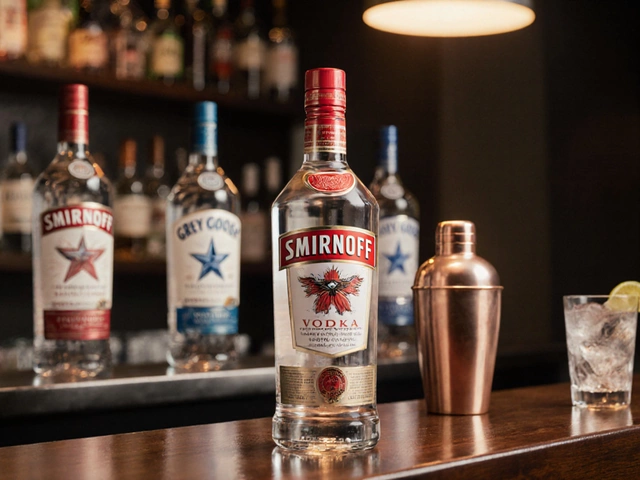Vodka Pricing: How Much Should You Pay for a Good Bottle?
If you’re standing in the liquor aisle wondering whether a $15 vodka is worth more than a $30 one, you’re not alone. Vodka pricing can feel random, but it’s actually based on a handful of clear factors. Knowing those factors helps you pick a bottle that fits your budget and taste.
First off, look at the raw material. Most vodkas start from grain, potatoes, or even grapes. Grain‑based vodkas are usually cheaper because grain is abundant and easy to process. Potato vodkas often cost a bit more; the yield is lower and the process is more labor‑intensive, which translates into a higher price tag.
The next big cost driver is the distillation method. Brands that boast multiple distillations or a special filtration system (charcoal, quartz, etc.) often charge more. More distillations can strip out impurities, giving a smoother mouthfeel, but the difference isn’t always obvious to the casual drinker. If you’re fine with a clean taste that’s not silk‑smooth, a vodka with one or two distillations will save you money.
What Makes a Vodka ‘Premium’?
Premium vodkas usually bank on three things: brand reputation, marketing, and a bit of luxury packaging. A well‑known name can command a higher price simply because people trust the label. Marketing costs—fancy bottles, celebrity endorsements, high‑end bar placements—are baked into the retail price. You’ll often see premium brands priced $30‑$50 per 750 ml, even if the production cost isn’t dramatically higher than a $15 counterpart.
But premium doesn’t always equal better for mixing. In a cocktail, the vodka’s subtle flavors get masked by other ingredients. If you’re making a classic Moscow Mule or a simple vodka soda, a mid‑range bottle ($15‑$20) will perform just as well as a $40 label. Save the high‑end bottles for sipping neat or on the rocks, where you’ll actually taste the difference.
Tips to Get the Best Value
1. **Set a price ceiling.** Decide how much you’re willing to spend before you shop. That simple rule stops you from being swayed by bright packaging.
2. **Read the label.** Look for “number of distillations” and the base ingredient. If the label mentions “filtered through charcoal” or “triple‑distilled,” expect a smoother profile—but also a higher price.
3. **Taste before you buy.** Many liquor stores offer small samples. A quick sip can tell you if the vodka feels clean enough for your taste.
4. **Buy in bulk or on sale.** Larger bottles (1 L or 1.75 L) usually have a lower per‑milliliter cost. Keep an eye on seasonal promotions – you can snag a $25 brand for $15 during a holiday sale.
5. **Consider local craft options.** Small distilleries often produce high‑quality vodka at competitive prices because they skip the massive marketing budget.
In the end, vodka pricing is a mix of ingredients, production steps, brand power, and where it’s sold. By focusing on what matters to you—smoothness for sipping or neutrality for mixing—you can avoid overspending and still enjoy a great drink.
Next time you’re at the store, remember: the most expensive bottle isn’t always the best choice for your cocktail, and the cheapest one isn’t automatically a low‑ball. Use the factors above, set your budget, and pick the vodka that fits your night, not just your wallet.
Explore the world of luxury vodka with our guide to the top 10 most expensive vodkas. This article delves into the allure of these premium spirits, including insights into their unique crafting processes and extravagant packaging. Discover why vodka, often seen as a humble spirit, commands such high prices and captivates the palates of connoisseurs around the globe. Learn tips on selecting the perfect bottle for your next celebration or investment.
View DetailsAbsolut Vodka is often debated in terms of its shelf status, relating to its quality and affordability. Though traditionally not seen as bottom shelf, some consumers are curious about its place amongst other spirits. This exploration takes into account its heritage, production quality, and market perception to provide a comprehensive view. It's important to understand Absolut's brand position and its impact on both casual drinkers and connoisseurs. Discover why Absolut remains a staple in home bars and cocktail recipes alike.
View Details


